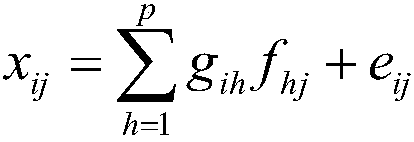Particulate matter inorganic component and organic identifier-based refined source analysis method
A technology of inorganic components and analytical methods, applied in the field of environmental monitoring
- Summary
- Abstract
- Description
- Claims
- Application Information
AI Technical Summary
Problems solved by technology
Method used
Image
Examples
Embodiment 1
[0027] 1. Collect a sample of particulate matter.
[0028] In a certain place, an automatic sampler was used to collect air for 100 consecutive days, and a total of about 100 samples were collected and brought back to the laboratory.
[0029] 2. Determining the content of inorganic components and organic components in particulate matter samples.
[0030] The organic components (such as hopanes, zanes, alkanes, polycyclic aromatic hydrocarbons, levoglucosan, cholesterol, etc.) and inorganic components (such as elements Na, Mg, Al, Si, K, Ca, Ti, V, Cr, Mn, Fe, Ni, Cu, Cd, Zn, Hg, Pb, etc.; ion Cl - , NO 3 - , SO 4 2- , NH 4 + etc.; organic carbon OC; elemental carbon EC, etc.) are detected.
[0031] The content of organic components was measured by GC-MS (gas chromatography-mass spectrometry), and the content of metal elements was measured by ICP-MS (inductively coupled plasma mass spectrometry) or ICP-AES (inductively coupled plasma atomic emission spectrometry) or XRF...
PUM
 Login to View More
Login to View More Abstract
Description
Claims
Application Information
 Login to View More
Login to View More - R&D
- Intellectual Property
- Life Sciences
- Materials
- Tech Scout
- Unparalleled Data Quality
- Higher Quality Content
- 60% Fewer Hallucinations
Browse by: Latest US Patents, China's latest patents, Technical Efficacy Thesaurus, Application Domain, Technology Topic, Popular Technical Reports.
© 2025 PatSnap. All rights reserved.Legal|Privacy policy|Modern Slavery Act Transparency Statement|Sitemap|About US| Contact US: help@patsnap.com



